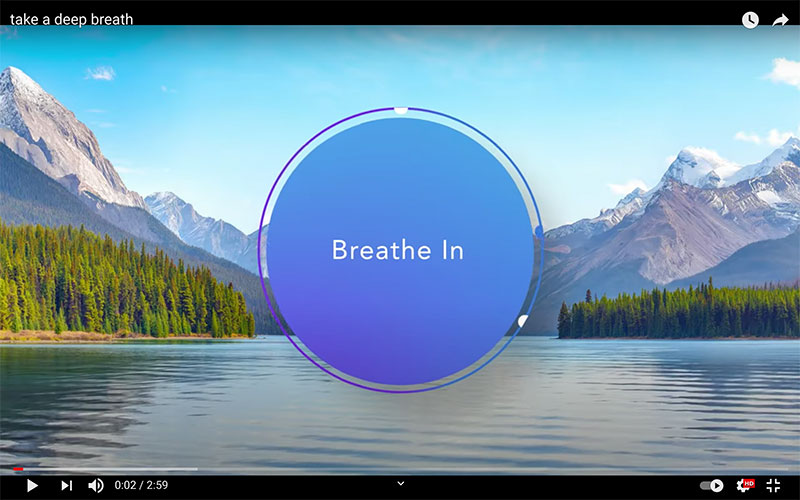Teach This Poem, though developed with a classroom in mind, can be easily adapted for remote learning, hybrid learning models, or in-person classes. Please see our suggestions for how to adapt this lesson for remote or blended learning. We have also noted suggestions when applicable and will continue to add to these suggestions online.
Participate in the three minute meditation.
The following activities and questions are designed to help your students use their noticing skills to move through the poem and develop their thinking about its meaning with confidence, using what they’ve noticed as evidence for their interpretations. Read more about the framework upon which these activities are based.
-
Warm-up: As a class, participate in the three minute meditation or the one minute meditation. While you participated, what did you notice about your breath, your thoughts, etc.?
-
Before Reading the Poem: Free-write for five minutes about breathing and breath.
-
Reading the Poem: Read the poem “a brief meditation on breath” by Yesenia Montilla silently. What do you notice about the poem? Annotate for any words or phrases that stand out to you or any questions you might have.
-
Listening to the Poem (enlist two volunteers to read the poem aloud): Listen as the poem is read aloud twice, and write down any additional words and phrases that stand out to you. Or, you may opt to listen to the poet read the poem aloud.
-
Small-group Discussion: Share what you noticed in the poem with a small group of students. Based on the details you just shared with your small group, and the discussions from the beginning of class, what is the purpose of breath or how does the speaker feel about breath?
-
Whole-class Discussion: (Teachers, your students might need more context about George Floyd’s life, Eric Garner’s life, and about police brutality. You may want to review these teaching resources; You may also want to pair this poem with Ross Gay’s “A Small Needful Fact.”) What correlations does the speaker make between breath and violence? Between violence and a contagious disease?
-
Extension for Grades 7-8: Read the “About This Poem.” If you were given the same task, to “write through the uncertainty,” what poem would you write? Write it.
-
Extension for Grades 9-12: This poem was first published in Poem-a-Day on July 21, 2020, as part of a week of poems guest edited by Mahogany L. Browne. Teachers, select an appropriate poem from Browne’s curation of Poem-a-Day during the week from July 20th to July 31st, and read Browne’s notes on this project. After, instruct your students to write a response (either a poem or a letter) to the poet. If appropriate, encourage your students to share their poems or letters.
Teachers, please consider sharing a poem with your students every day during Black History Month. You can find poems about joy, heritage, family, social justice, history, and more, as well as more than two dozen lesson plans and other teaching resources for the occasion.
This week’s poetic term is caesura, referring to a pause for a beat in the rhythm of a verse, often indicated by a line break or by punctuation. Read more poetic terms.

